Research
Physical Simulation Projects
Atomistic Simulation of Grain Boundary Migration
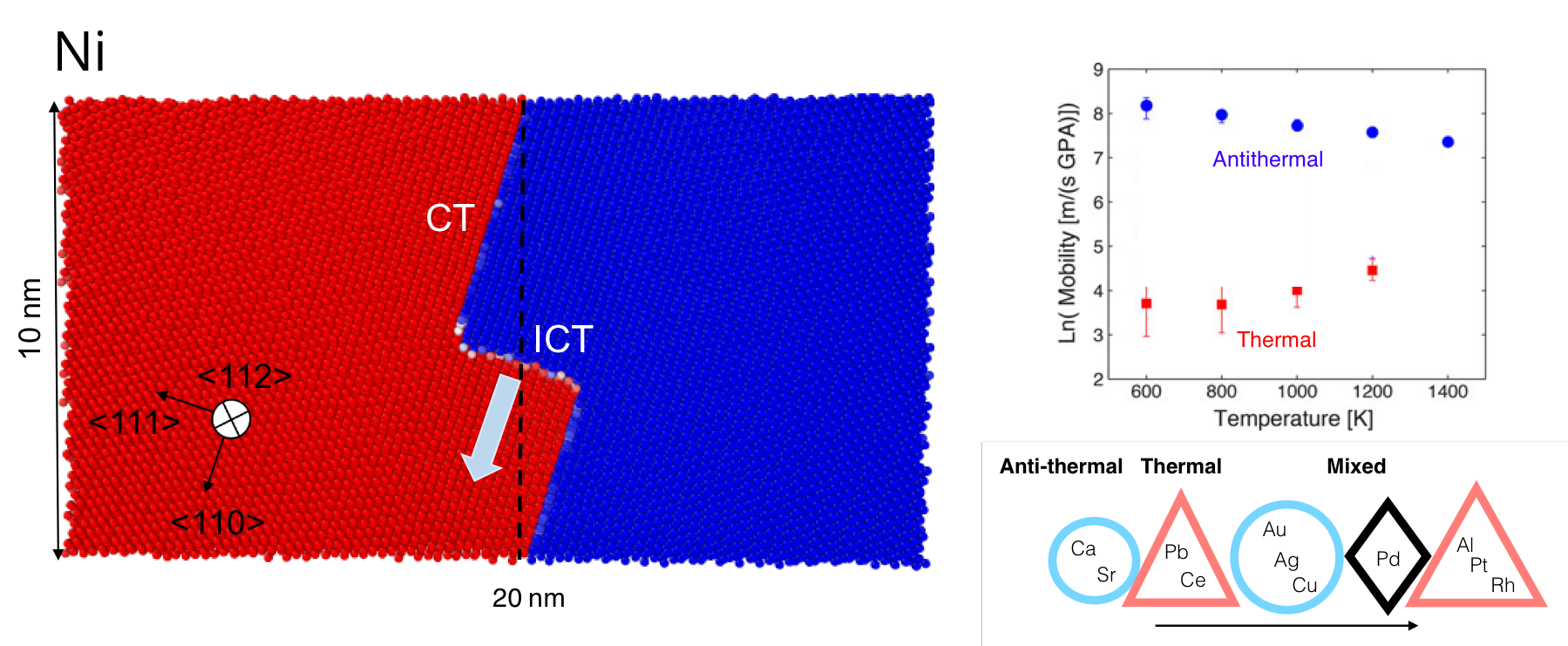
Identical crystallographically defined grain boundaries in different FCC metals can show distinct thermal behavior.
Carbon Nanotube Modeling
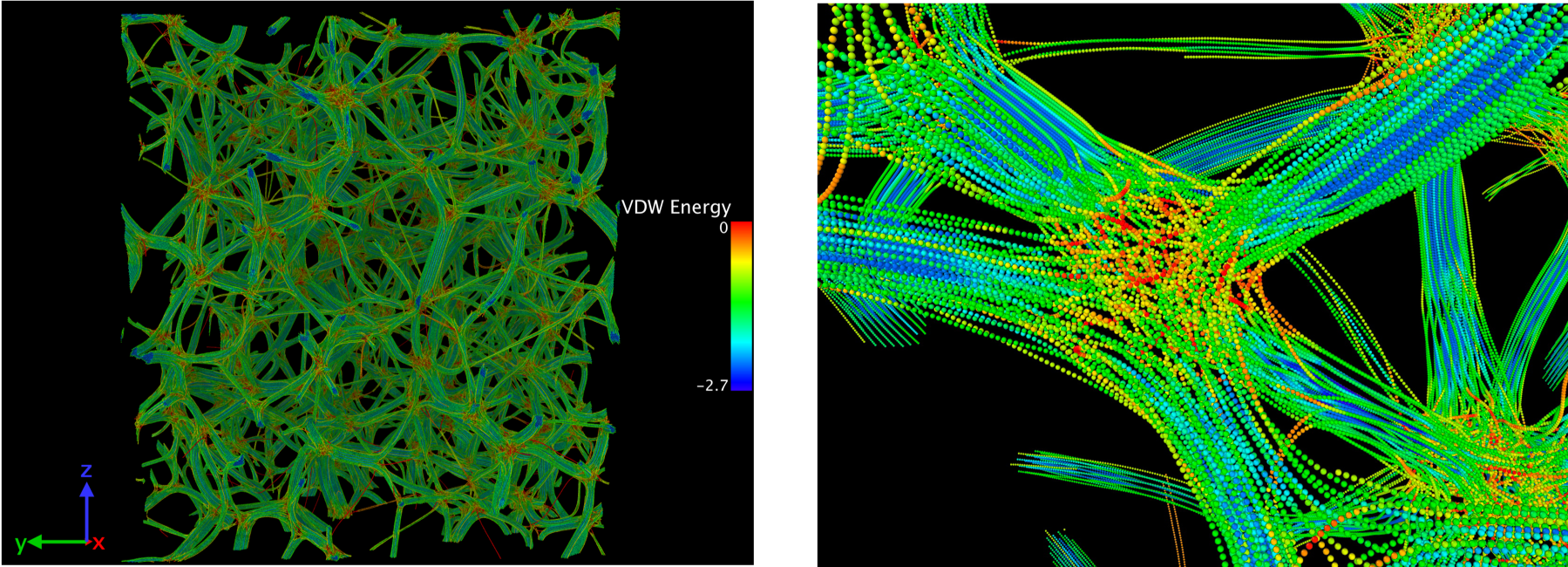
Single Wall Carbon Nanotubes (SWCNT) form random networks in aerogels that are governed by the van der Waals interaction at nodes. These aerogels show high initial stiffness compared to other classes of aerogels; however, they tend to deform in a plastic manner for strains >9%. Recent experimental studies show that nanotubes in these aerogels can be covalently cross-linked, which is postulated to improve stiffness and yield strength of these materials. Our group members model mechanical behavior of these aerogels using a multi-scale modeling approach. Molecular Dynamics (MD) simulates polymer cross-links between nanotubes and Finite Element Modeling (FEM) is used to study the mechanical behavior at continuum scale.
Multiphysics Microstructural Evolution Modeling

3D simulations of materials with multiphysics microstructural evolution models provide more realistic insight to material behavior.
Materials Informatics
Machine Learning Approaches for Materials Data Sciences
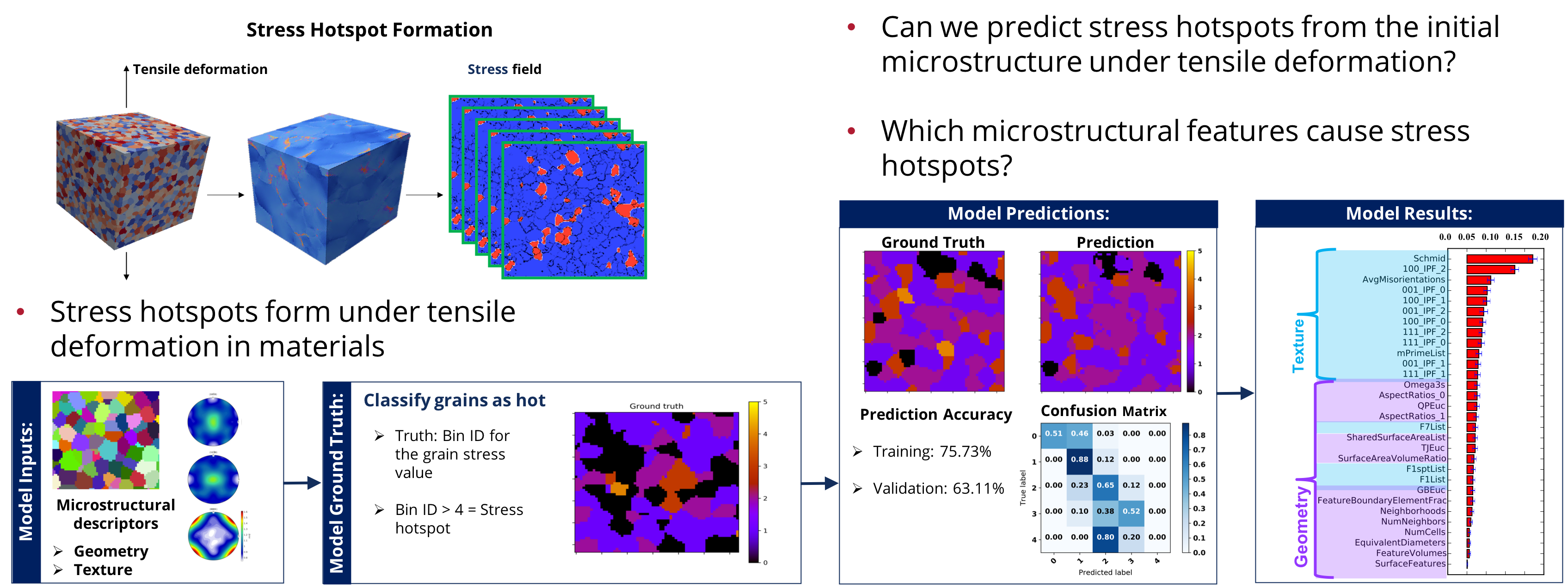
Words words words.
Computer Vision for Microstructure Science
Automatic Segmentation
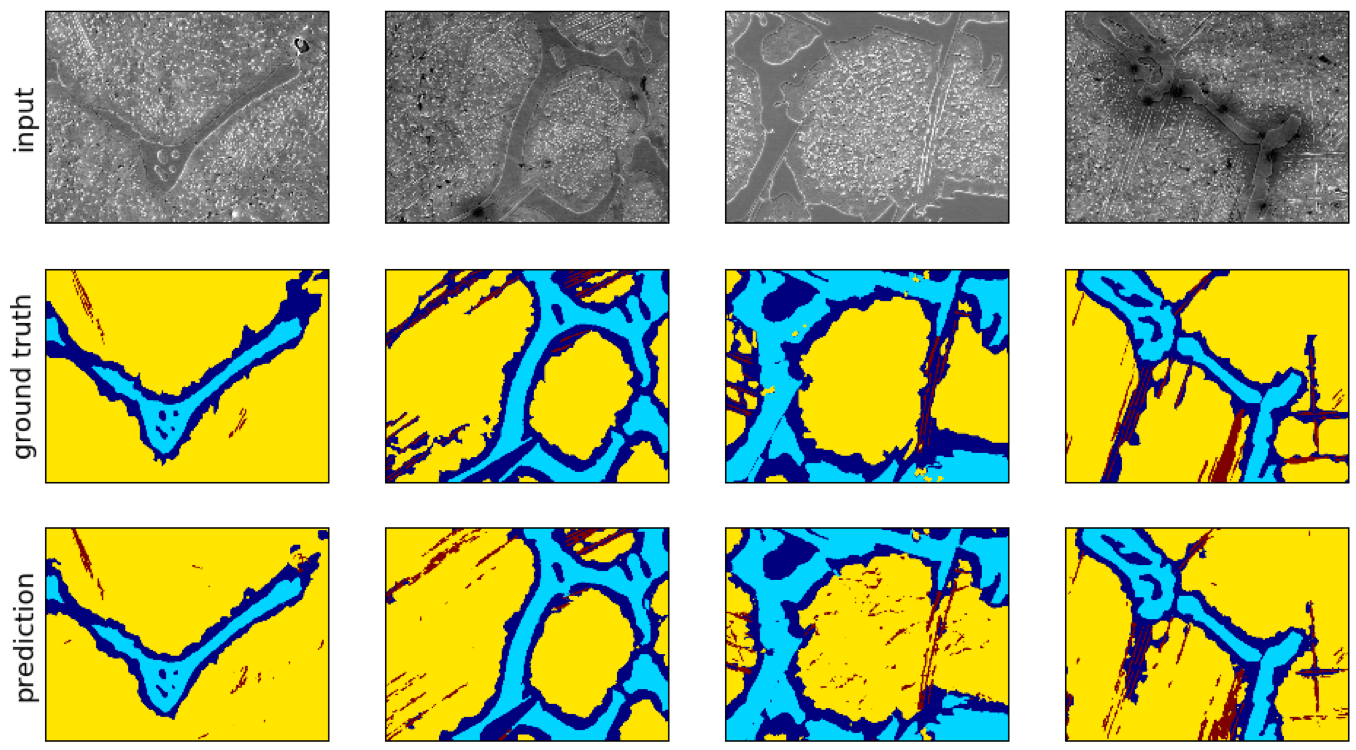
Computer vision and machine learning perform automatic segmentation of micrographs.
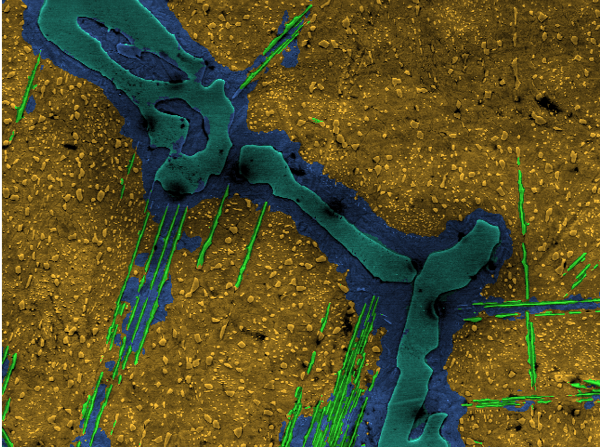
After training, a computer can perform automatic segmentation of micrographs, saving hours of tedious work.
Fracture Surface Challenge
Here’s a fun challenge! These six images below come two distinct classes. Try to group these images into those two classes.
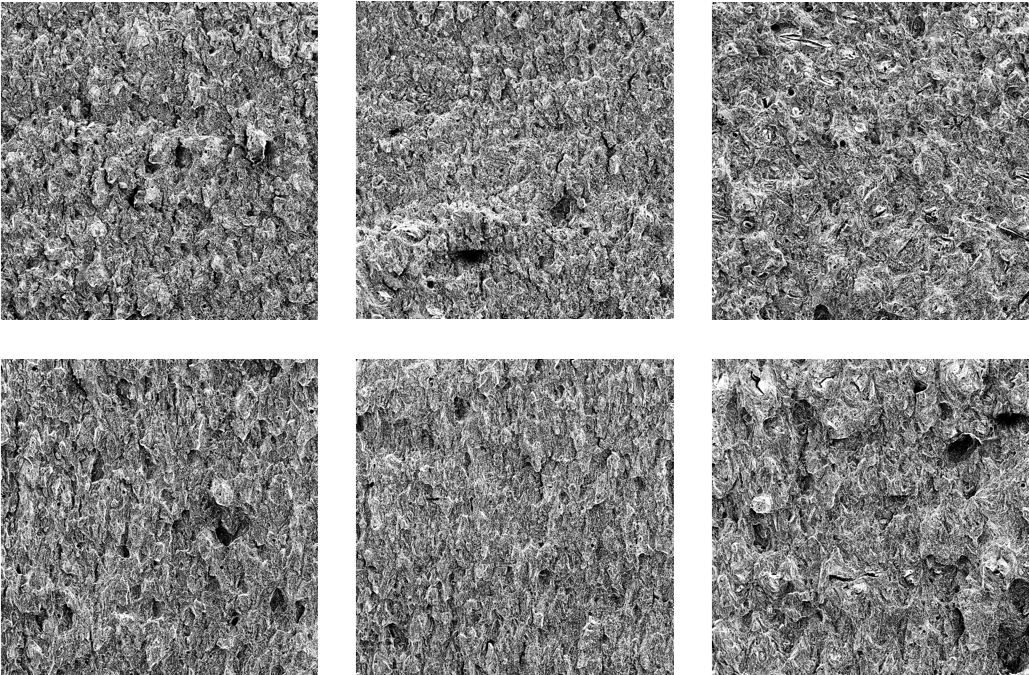
It’s pretty challenging! These images are Charpy fracture surfaces of an additively manufactured metal. We examined two distinct build orientations. Intuition suggests that change in build orientation should affect the microstructures of the samples, and thus the properties of the samples. Further, we expect this difference to manifest a visual signature in the images of fracture surfaces. As it turns out, there is more than meets the eye here. Although challenging for the human eye to detect, computer vision can identify some of the underlying physics captured in these fracture micrographs and complete this challenge!

Computer Vision for Additive Manufacturing Characterization

Image processing separates powder particles from background in SEM image and computer vision identifies particles of various morphologies and applies false color for visual inspection (top). t-SNE projection of individual powder particles (left) shows a gradient of “crunchy” particles near the top to spherical powders with few or no morphological defects at the bottom. A 6-class k-means cluster analysis is performed on these particles to show relative distributions of identified particle morphologies (bottom right).